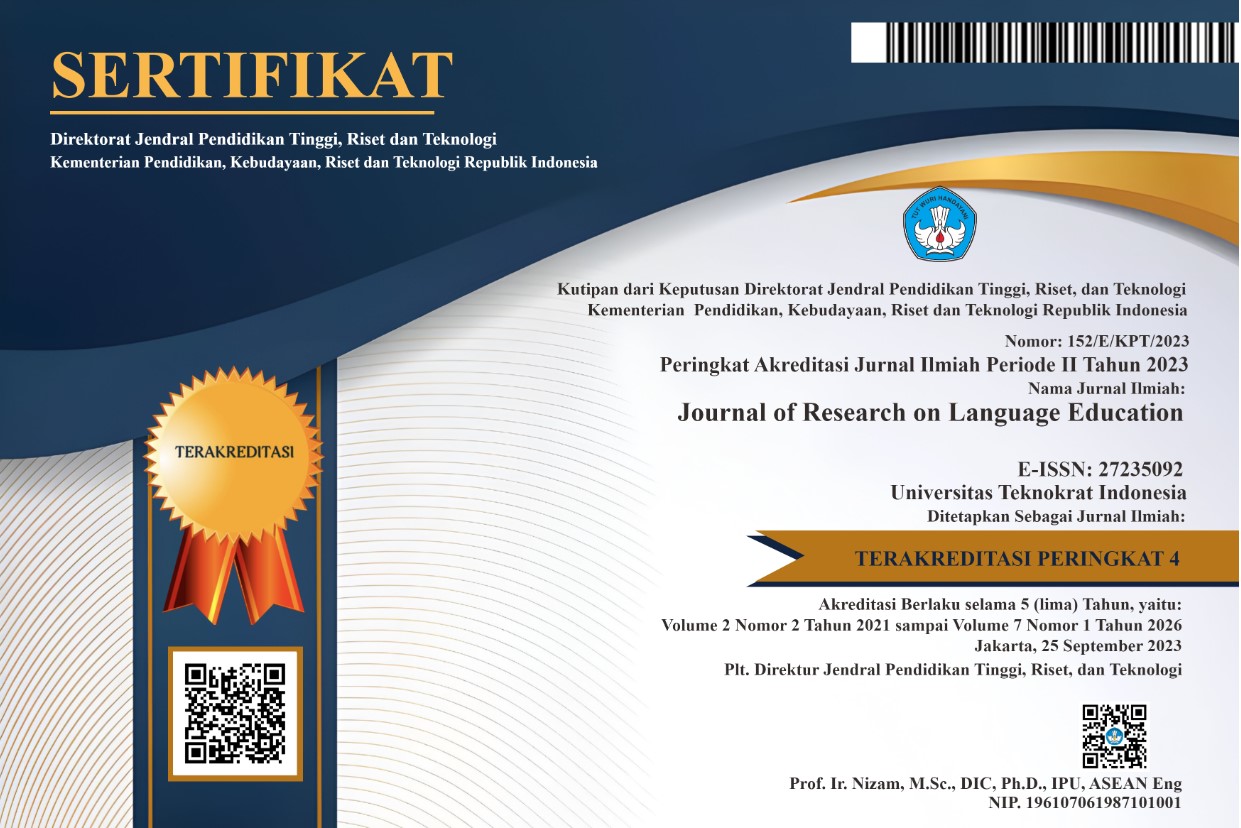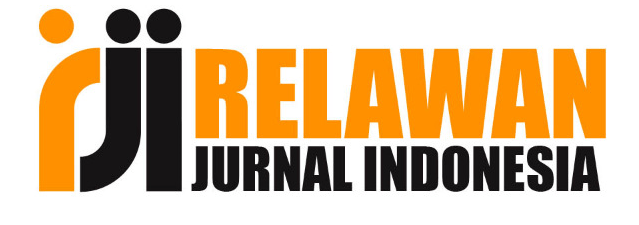THE CORRELATION BETWEEN EFL LEARNERS COHESION AND THEIR READING COMPREHENSION
Abstract
Keywords
References
Aminatun, D., & Oktaviani, L. (2019). Memrise: Promoting Students’ Autonomous Learning Skill through Language Learning Application. Metathesis: Journal of English Language, Literature, and Teaching, 3(2), 214–223. https://doi.org/10.31002/metathesis.v3i2.1982
Ayu, M., Diem, C. D., & Vianty, M. (2017). Secondary school students’ English literacy: Use of interactive read aloud instructional strategy. International Journal of Applied Linguistics & English Literature, 6(7), 292-299
Halliday & Hasan. (1976). Cohesion in English. Neew York: Longman Group Ltd.
Januarty, R.-, & Nima, H. N. A. (2018). Energizing Students’ Reading Comprehension through Multimodal Texts. International Journal of Language Education, 2(2), 14–22. https://doi.org/10.26858/ijole.v2i2.4347
Kaganang, G. (2019). The Use of Problem-Based Learning to Improve Students’ Reading Comprehension at the First Grade Students of Senior High School 1 of Middle Halmahera. Journal of Linguistics, 2(1), 9.
Lestari, E. D. (2018). The Correlation between Students’ Vocabulary Mastery and Reading Comprehension of the Eleventh Grade Students of SMAN 5 Palu. E-Journal of ELTS (English Language Teaching Society), 6(1), Article 1. http://jurnal.untad.ac.id/jurnal/index.php/ELTS/article/view/11495
Mandasari, B., & Oktaviani, L. (2018). English language learning strategies: an exploratory study of management and engineering students. Premise Journal, 7(2), 61-79.
Melsandi, M. (2018). Improving Reading Comprehension of the Grade Eight Students at SMP Negeri 1 Balano Lambunu through Comprehension Monitoring Stategy. E-Journal of ELTS (English Language Teaching Society), 6(3), Article 3. http://jurnal.untad.ac.id/jurnal/index.php/ELTS/article/view/11524
Oktaviani, L., & Sari, F.M. (2020). Reducing Sophomore Students’Dilema in Creating an Appealing Teaching Medium Through Slidesgo Usage. Jurnal IKA PGSD (Ikatan Alumni PGSD) UNARS, 8(2), 342-349.
Septiyana, L. (2019). Designing English Speaking Materials Using Task- Based Language Teaching (TBLT) for Islamic Economics Students. IDEAS: Journal on English Language Teaching and Learning, Linguistics and Literature, 7(2). https://doi.org/10.24256/ideas.v7i2.1031
Simamora, M. W. B., & Oktaviani, L. (2020). What is Your Favorite Movie?: a Strategy of English Education Students to Improve English Vocabulary. Journal of English Language Teaching and Learning, 1(2), 44-49. DOI: https://doi.org/10.33365/jeltl.vli2.604
Sinaga, R.R.F., & Oktaviani, L. (2020). The Implementation of Fun Fishing to Teach Speaking for Elementary School Students. Journal of English Language Teaching and Learning, 1(1), 1-6. DOI: https://doi.org/10.33365/jeltl.v1i1.245
Sulaiman, S. (2019). Optimizing Students’ Reading Comprehension Through Direct Reading Thinking Activity. Journal of English Language Learning, 3(2). http://jurnal.unma.ac.id/index.php/JELL/article/view/1536
Supini, N. M. A., & Savitri, P. W. (2017). Lexical Cohesion and Semantic Relation With Reference To Saint Exupery, The Little Prince. Humanis, 19(1). https://ojs.unud.ac.id/index.php/sastra/article/view/29718
Tuzahra, F. (2021). Reading Online: Evaluation of Online Sources Credibility. Journal of Research on Language Education, 2(1), 32–36. https://doi.org/10.33365/jorle.v2i1.1007
Yuliansyah, A. & Ayu, M. (2021). The Implementation of Project-Based Assignment in Online Learning during Covid-19. Journal of English Language Teaching and Learning, 2(1), 29-34
DOI: https://doi.org/10.33365/jorle.v2i2.1154
Refbacks
- There are currently no refbacks.

This work is licensed under a Creative Commons Attribution-NonCommercial-ShareAlike 4.0 International License.

Articles published in Journal of Research on Language Education is licensed
under a Creative Commons Attribution-ShareAlike 4.0 International License.
English Education Study Program, Faculty of Arts and Education.
Universitas Teknokrat Indonesia
Zainal Abidin Pagaralam 9-11 Bandar Lampung, Indonesia
All rights reserved.








